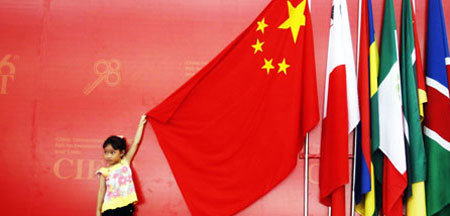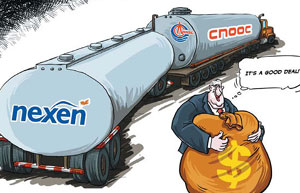Understanding China key to Australia's economic future
Updated: 2013-03-18 14:47The HSBC study shows 70 percent of Chinese companies choose to expand offshore to help with the flow of their foreign trade and 60 percent are seeking to expand their sales networks. Only one in three (32 percent) expand offshore to secure supply of raw materials.
The research comes as China's Commerce Ministry recently announced that China's outbound direct investment in the non- financial sector is expected to increase by 15 percent in 2013 to $77.22 billion.
For an economy strongly tethered to a China-led mining boom, the HSBC report is foreshadowing Australia's need to diversify, with the survey revealing more Chinese companies are investing offshore in manufacturing and wholesale/retail industries than mining.
According to Hogan, "By the time China's current five-year plan concludes in 2015, China's total direct outbound investments are expected to annually exceed $150 billion growing at expected 17 percent per annum."
"While 80 percent of China's investment into Australia to date has been in mining, its increasing demand for high-end manufacturing, renewable energy and agriculture will open up new opportunities for Australia."
But it was the joint report from KPMG and University of Sydney released last week that sent shockwaves through Australian official circles by forecasting the end of Australian dominance of Chinese capital investment.
The widely circulated report, jointly authored by teams led by respected cross-cultural leaders Professor Hans Hendrischke from the University of Sydney China Studies Centre and KPMG's Head of China Practice Doug Ferguson, found that competition for Chinese investment is tightening.
"The USA and Canada in particular are catching up with Australia. While Australia's accumulated Chinese direct investment is still ahead of its main international competitors, there is no denying that the rest of the world is hot on our heels and aggressively competing for Chinese capital." Professor Hendrischke said.
By the end of 2012, total accumulated investment reached $51 billion in Australia, followed by $50.7 billion in the United States and $36.7 billion in Canada. Other major recipients included Brazil and Russia. The largest investment destinations in Europe and Africa are the United Kingdom and Nigeria respectively.
Related Links
Australia, top destination for Chinese investment, faces growing competition
Chinese investment in Australia turns a corner
Australia celebrates Spring Festival with overseas Chinese
Australia, China launch new co-op in food security
Australia plans to attract Chinese high school students
- BYD exports three electric cars to Thailand
- Grid gets first jolt of residential solar power
- US now largest buyer of China's exports
- China's outbound M&As on the rise
- Tobacco control may entail price, tax rises
- Quanzhou becomes pilot financial reform zone
- New automobiles shine at Geneva Motor Show
- World's longest high-speed rail 'on track'
- Jiugui Liquor involved in plasticizer scandal again
- Accident reignites school bus safety concerns
- China to revise labor law
- Trademark registration under scrutiny
- Dinner ban takes toll on liquor firms
- CIC tables bid for London's Chiswick Park
- Property buyers eye overseas market
- Call for law to protect personal information
- China to cut train ticket prices
- Christmas business
- Solar industry to get jolt from new policies
- KFC chicken under spotlight















